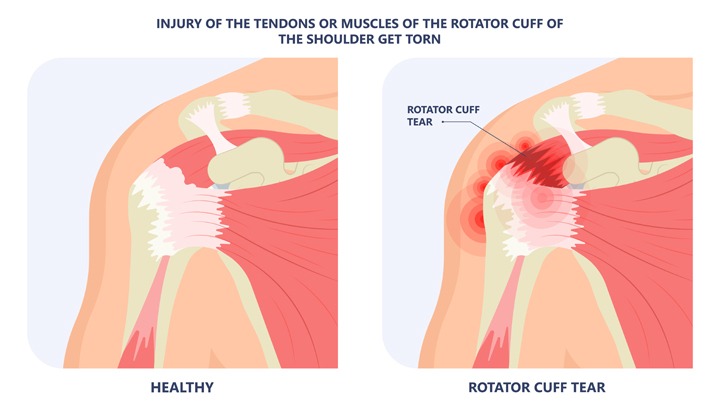Glenoid Labrum Tear Treatment
Glenoid labrum tear refers to an injury in which the cartilage lining the shoulder tears causing pain and other symptoms. The injury is usually due to an impact trauma, such as a direct blow to the shoulder or a fall. It may occur over time as well from playing sports that involve a lot of shoulder movement.
 Fortunately, glenoid labrum tear can be treated in both surgical and nonsurgical way. Often times, surgical procedures are recommended if the symptoms fail to go away or if the tear is severe.
Fortunately, glenoid labrum tear can be treated in both surgical and nonsurgical way. Often times, surgical procedures are recommended if the symptoms fail to go away or if the tear is severe.
Thomas & Bigler Knee and Shoulder Institute, led by board certified orthopedic surgeons Dr. Steven C. Thomas and Dr. Gregory T. Bigler, provides orthopedic surgery to patients in Las Vegas, Nevada, while also serving areas such as greater Pahrump, Bullhead City, Lake Havasu, and Mesquite, NV.
Understanding a Glenoid Labrum Tears
Shoulder joint tears or glenoid labrum tears refers to a tear in the cartilage reinforcing or lining the shoulder joint. Shoulder socket injuries are generally caused by repetitive shoulder motions or acute trauma. This can be by falls or direct blows to the shoulder. It can also occur because of a violent overhead reach or a sudden pull.
Weight lifters and throwing athletes are susceptible to such tears because of the repetitive shoulder motions required by their sport. Glenoid larum tears can happen below (inferior) or above (superior) the center of the glenoid socket. It may tear entirely or partially.
Symptoms of Glenoid Labrum Tear
Glenoid labrum tears can result in the following symptoms:
- Shoulder dislocation
- Instability in the shoulder
- Decreased range of motion
- Strength loss
- Occasional pain during the night
- Pain while performing daily activities
- Pain during overhead activities
- Sensation that the shoulder is locking, catching, grinding or popping
Nonsurgical Options
Your physician will ask you to rest and prescribe anti-inflammatory medications to relieve symptoms until a diagnosis is made. They may also recommend rehabilitation exercises to strengthen and improve flexibility in your rotator cuff muscles.
Nonsurgical methods are often effective at relieving symptoms. They also help in healing the injured bone structure. Your doctor may recommend getting a surgery if the nonsurgical measures are inadequate.
Surgical Treatment for Glenoid Labrum Tear
The physician, depending on the injury may choose a traditional arthroscopic or open procedure. In this the surgeon will use miniature instruments and small incisions. The doctor will assess and examine the biceps tendon and the rim completely during both the surgeries.
The shoulder is stable if the surgeon only looks at the rim and doesn’t examine the tendon. The torn flap will be removed if the shoulder is stable to fix all problems. The biceps tendon may be considered unstable if the tear extends all the way down to the biceps tendon or if the tendon gets completely detached.
The tendon will need to be transferred using absorbable sutures, screws and tacks or repaired if this is the case. Tears below the socket require the ligament to be reattached. The shoulder is then tightened by pleating the tissues.
Orthopedic surgeons Dr. Thomas and Dr. Bigler receive patients from Las Vegas, Nevada as well as greater Pahrump, Bullhead City, Lake Havasu, and Mesquite, NV for orthopedic surgery.
Contact Board Certified Surgeons Dr. Bigler or Dr. Thomas at the Knee and Shoulder Institute in Las Vegas, NV to Schedule an Appointment:
If you would like to schedule an appointment or learn more about the Knee and Shoulder Institute procedures & treatments performed by Las Vegas, Nevada board-certified surgeons Steven C. Thomas, MD and Gregory T. Bigler, MD. Contact the office today click here.
Serving patients from and around greater Las Vegas, Lake Havasu, Bullhead City, Mesquite, Pahrump, Nevada
